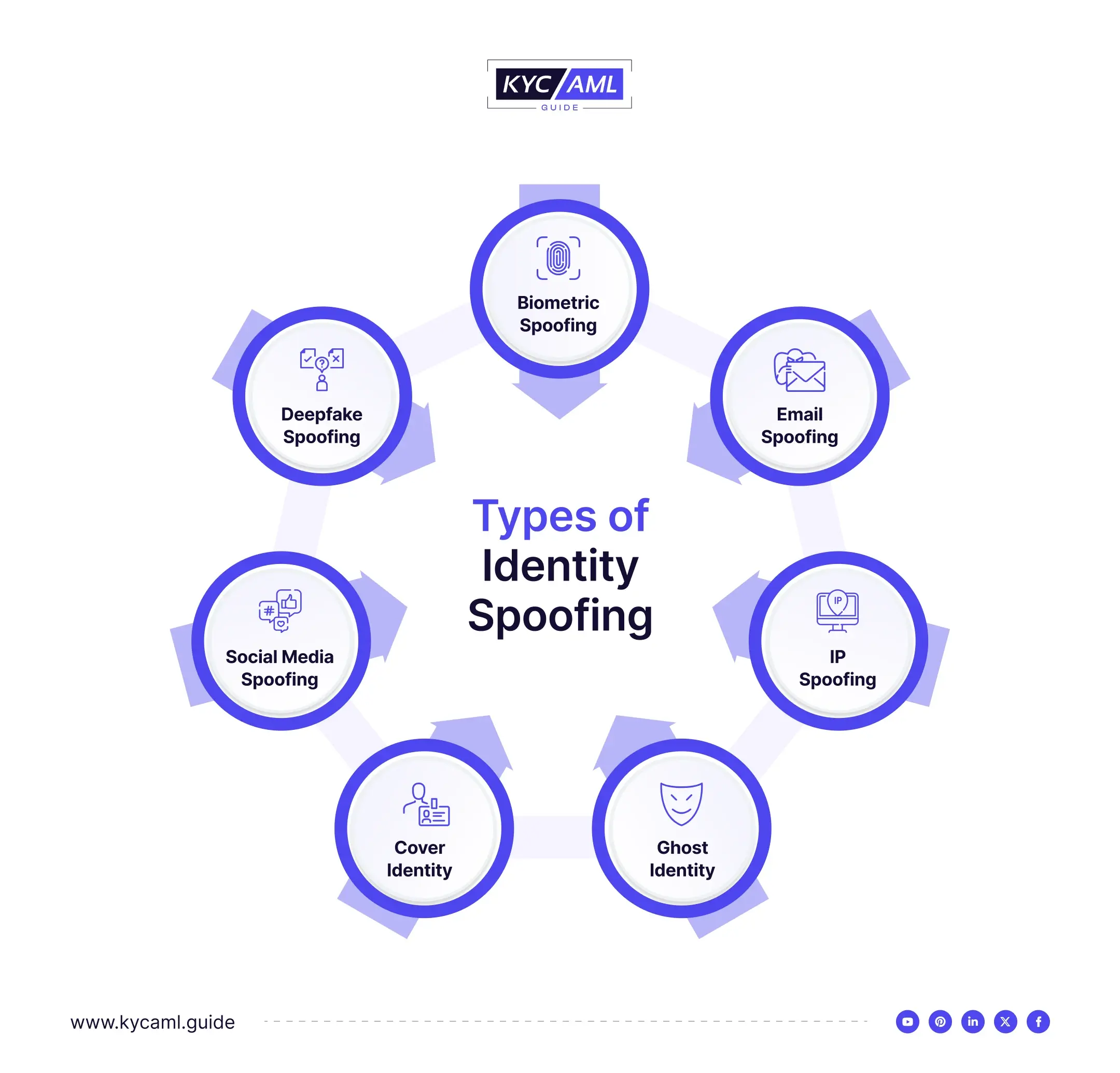What is Identity Spoofing?
Identity Spoofing or simply spoofing is a malicious act in which a criminal disguises as another individual or a business entity. It is done for different illicit reasons such as carrying out a cyberattack, hacking, or money laundering. Spoofing is a sophisticated crime that requires a level of proficiency and fakeness that can go undetected.
Types of Identity Spoofing

| 1 | Biometric Spoofing |
|
| 2 | Email Spoofing |
|
| 3 | Deepfake Spoofing |
|
| 4 | IP Spoofing |
|
| 5 | Social Media Spoofing |
|
| 6 | Cover Identity |
|
| 7 | Ghost Identity |
|
Best Ways to Detect Identity Spoofing
To detect a spoofing attack in any form, a person can try the following methods to strengthen the anti-spoofing mechanisms.
Biometric Authentication
Using multi-factor biometric authentication can add an extra security layer to identity verification systems. Apply a combination of facial recognition, fingerprint scanning, and other biometrics to make it difficult for spoofers to use a single biometric authenticator and make their illicit job near impossible.
Behavioral Analytics
Through employing anomaly detection techniques and pattern recognition, behavioral analytics act as a handy tool to detect spoofing on a professional scale.
Email Authentication
Validating the email senders through different authentication protocols such as, SPF (Sender Policy Framework), DKIM (Domain Keys Identified Mail), DMARC (Domain-based Message Authentication, Reporting, and Conformance).
Device Recognition
Device recognition is mostly used in recognizing mobile devices owned by users. It includes flagging and reporting unrecognized and suspicious devices attempting to access the service.
Real-Time Monitoring
Continuously monitoring activities and transactions of users by expert professionals.
The Role of KYC Solutions in Detecting Identity Spoofing
KYC (Know Your Customer) is a comprehensive customer onboarding system that ensures that even before a customer is onboarded it should be verified that the customer is authentic and a real person. Thus, it employs a combination of the above-discussed techniques to detect Spoofing, and other fraudulent activities related to Identities.
KYC Solutions contain:
- Customer Identification Procedures (having different technologies, devices, and methods to identify customer identities)
- Document Testing (to differentiate between fake and original documents through different testing methods)
- Suspicious Activity Reporting (SAR in which suspicious activities associated with a particular customer profile/account are reported)
- Ongoing Monitoring (Regular monitoring of onboarded customers to detect any possible illicit activity)
To properly navigate through the KYC Tool’s capabilities and take full benefit of the deployed solution, KYC AML Guide is a premium source of required knowledge and expertise that caters to your need for guidance in choosing the right KYC Partner. Our Vendor Analysis and other research-based services are the best way to meet your compliance needs and help you stay ahead of your competition in regulating your business.





